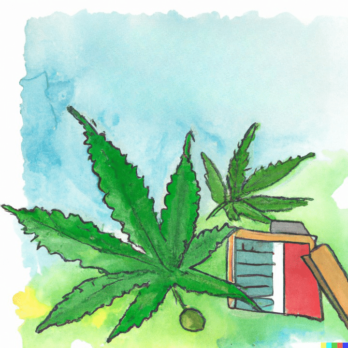As the wave of cannabis legalization continues to sweep across the United States, a new source of revenue has emerged for state governments: cannabis taxes. These funds, often substantial, are being put to use in a variety of ways, from education to infrastructure and beyond. In this article, we’ll explore how states, including Montana, are utilizing their cannabis tax revenues.
The Cannabis Tax Landscape
Before we delve into specifics, it’s important to understand the tax landscape surrounding cannabis. In states where cannabis is legal, both for medical and recreational use, taxes are typically imposed at the retail level on end-user purchases. The tax rates vary from state to state and can be quite complex, often involving a combination of state and local taxes.
For instance, in Montana, the state legislature has set taxes at 4% for medical marijuana and 20% for adult-use sales. Additionally, local-option tax rates are set by the county, up to a maximum of 3% on medical, adult-use, or both. These taxes are in addition to the state taxes.
The Allocation of Cannabis Tax Revenues
Now, let’s turn our attention to how these funds are being used. The allocation of cannabis tax revenues varies widely from state to state, reflecting the unique needs and priorities of each jurisdiction. However, a few common themes emerge when we look at the big picture.
Education and Youth Programs
Many states allocate a portion of their cannabis tax revenues to education. This can take the form of funding for K-12 education, college scholarships, or youth drug prevention programs. For example, Colorado uses a significant portion of its cannabis tax revenues to fund the state’s public school system.
Public Health Initiatives
Public health initiatives are another common beneficiary of cannabis tax revenues. These can range from substance abuse prevention and treatment programs to mental health services. In some states, funds are also used to research the health effects of cannabis.
Infrastructure and Community Development
Infrastructure projects and community development are other areas where cannabis tax revenues are often directed. This can include everything from road repairs and public transportation projects to affordable housing initiatives and local business support.
The Montana Model
Now, let’s take a closer look at Montana, a state that has taken a comprehensive approach to utilizing its cannabis tax revenues. In Montana, the distribution of the tax revenue from marijuana sales is allocated to a variety of sectors.
A significant portion of the funds goes towards the Healing and Ending Addiction through Recovery Treatment (HEART) initiative, which focuses on substance use disorder prevention and mental health promotion. This reflects a growing trend among states to use cannabis tax revenues to address public health issues, particularly those related to substance use.
In addition, Montana allocates funds to the Fish Wildlife Parks State Parks Account, the Fish Wildlife Parks Trails Recreational Facilities Account, and the Fish Wildlife Parks Non-game Wildlife Account. This demonstrates a commitment to preserving and enhancing the state’s natural resources.
Other beneficiaries of Montana’s cannabis tax revenues include the Department of Military Affairs Veterans Surviving Spouses Account and the Board of Crime Control Crisis Intervention Team Training. A portion of the funds also goes to the state’s General Fund.
Conclusion
The legalization of cannabis has opened up a new revenue stream for states, and the tax dollars generated are being put to good use. From education and public health to infrastructure and community development, these funds are making a difference in communities across the country.
In Montana, the comprehensive approach to utilizing cannabis tax revenues reflects a thoughtful balance of supporting public health, preserving natural resources, and addressing other community needs. As more states move towards legalization, they would do well to consider Montana’s model.
The green rush is more than just a boon for cannabis enthusiasts and businesses; it’s an opportunity for states to invest in their communities and their future. And that’s something we can all get behind.



